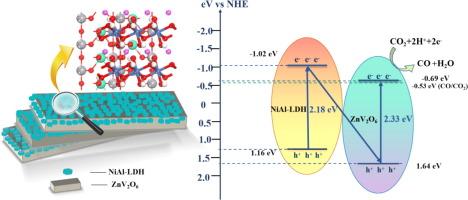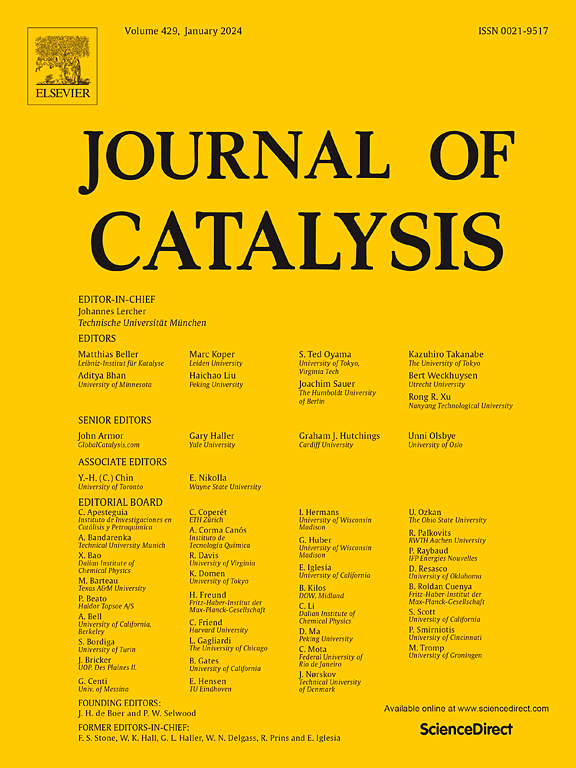Engineering two-dimensional multilayer heterostructure of internal electric field to enhance CO2 photoreduction
IF 6.5
1区 化学
Q2 CHEMISTRY, PHYSICAL
引用次数: 0
Abstract
CO2 photo reduction provides a feasible technique to solve climate issues and promote carbon neutrality. However, the efficiency of CO2 photo reduction is severely depressed by the rapid recombination of photo generated carriers within photo catalysts, restricting the participation of electrons in the reduction process. In this study, we successfully construct a two-dimensional (2D) multilayer internal electric field (IEF) heterostructure by engineering the interface between NiAl-LDH and ZnV2O6 (ZNA). Driven by the IEF, the separation of photo generated electron-hole pairs is significantly enhanced, leading to the increased utilization efficiency of carriers for active sites. The best-performing sample of ZNA-2 achieves a highest CO yield of 695.8 μmol g−1, approximately 30.5-fold higher than that of pristine ZnV2O6. Photo electrochemical measurement and density functional theory (DFT) calculation results reveal that the 2D-2D stacked structure generates multiple interlayer built-in electric fields, which are crucial for enhancing carrier separation and suppressing recombination. Adsorption energy and intermediate COOH* analysis reveal that ZNA-2 significantly lowers the adsorption energy of CO2, promoting its stable adsorption and subsequent conversion. Moreover, the unique 2D multilayer IEF heterostructure greatly facilitates the formation of key intermediate COOH* and the desorption of CO during CO2 photo reduction, leading to high CO activity and selectivity. The present work discloses the unprecedented potential of 2D multilayer IEF heterostructures for efficient CO2 photo reduction, marking a significant advancement over conventional 2D counterparts.


求助全文
约1分钟内获得全文
求助全文
来源期刊

Journal of Catalysis
工程技术-工程:化工
CiteScore
12.30
自引率
5.50%
发文量
447
审稿时长
31 days
期刊介绍:
The Journal of Catalysis publishes scholarly articles on both heterogeneous and homogeneous catalysis, covering a wide range of chemical transformations. These include various types of catalysis, such as those mediated by photons, plasmons, and electrons. The focus of the studies is to understand the relationship between catalytic function and the underlying chemical properties of surfaces and metal complexes.
The articles in the journal offer innovative concepts and explore the synthesis and kinetics of inorganic solids and homogeneous complexes. Furthermore, they discuss spectroscopic techniques for characterizing catalysts, investigate the interaction of probes and reacting species with catalysts, and employ theoretical methods.
The research presented in the journal should have direct relevance to the field of catalytic processes, addressing either fundamental aspects or applications of catalysis.
 求助内容:
求助内容: 应助结果提醒方式:
应助结果提醒方式:


